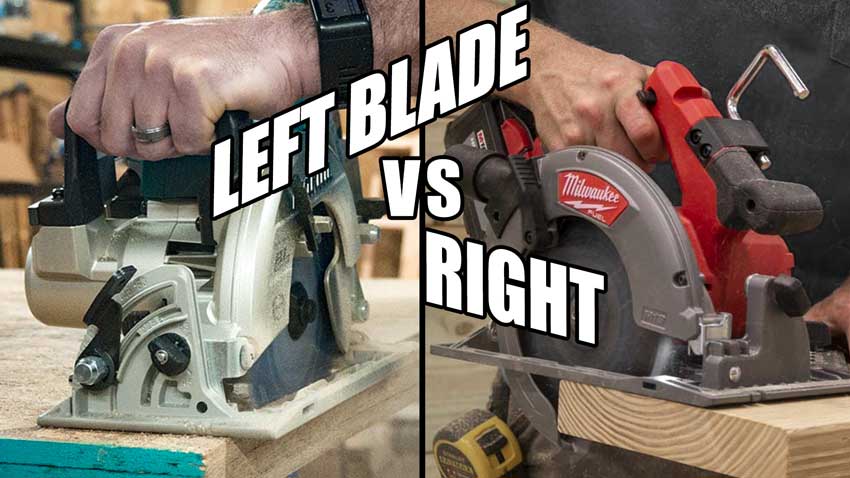
If you are Studying tools, It is easy to feel perplexed by names that seem equivalent. Such as, the Difference between skill saw and circular saw is a common concern. This informative article describes things in simple text so you can choose the suitable Software and use it safely.
Exactly what is a Round Noticed?
A round noticed is often a hand-held blade you force alongside a piece of Wooden or other product. It's light, uncomplicated to hold, and great for straight cuts. Most circular saws Slash boards, plywood, and slender sheet elements properly.
You hold the observed with two hands, guide it alongside a line, along with the spinning blade can make the Reduce. It’s quick and useful for position-site do the job or tiny jobs round the home.
What on earth is a Ability Noticed?
"Talent noticed" is a model title that Lots of people use to suggest a kind of circular saw—commonly a major-responsibility 1 with a powerful motor. Right now, when men and women say talent noticed they generally necessarily mean an entire-dimensions circular saw or perhaps a noticed designed for harder Employment.
So, at times the terms overlap. A talent noticed may very well be constructed stronger and Slice thicker wood more conveniently than a smaller circular noticed.
Talent Saw vs Circular Noticed — Important Dissimilarities
- Dimensions and electrical power: Skill saws (or entire-sizing circular saws) normally have bigger motors and might Slash thicker material. More compact circular saws are lighter and much easier to use for brief jobs.
Precision: The two might be accurate, but An even bigger observed with a great information or fence is frequently much better for very long, straight cuts. Use case: For framing or weighty lumber, a skill observed is helpful. For trimming or cutting plywood, a smaller round observed generally does the job.
If you want far more examining on genuine models and designs, Verify the phrase skill saw vs circular saw on reliable Resource web sites to match distinct attributes and prices.
Tips on how to Drill Into Brick — Simple Methods
Drilling into brick is popular for hanging shelves, lights, or anchors. Brick is hard, but in case you abide by these actions you can do it properly.
- Pick the right drill: Use a hammer drill In case you have a person. Otherwise, an everyday drill additionally sluggish, constant strain can operate.
Pick the proper little bit: Make use of a masonry little bit. These bits are created to chop by means of brick and mortar. Mark the location: Place a little mark that has a pencil. You need to use masking tape within the drill little bit to be a depth tutorial. Get started bit by bit: Start off at minimal velocity to produce a starter gap, then increase speed as wanted. Hold it continuous: Keep the drill straight and apply constant tension. Tend not to pressure the little bit much too hard—Enable the bit cut. Blow or brush dust out: Pull the bit out from time to time to obvious dust Hence the bit can Slash better.
When concluded, use a proper anchor and screw for your load. Safety glasses and dust mask are crucial—brick dust is terrible to breathe.
Orbital Sander vs Sheet Sander — Which One particular to work with?
The two sanders sleek wood, Nonetheless they get the job done just a little in a different way.
Orbital sander: Moves in compact circles. It removes product rapidly and leaves a great finish if you use fine grit. It’s great for curved surfaces and ultimate ending. Sheet sander (finishing or palm sander): Uses a square or rectangular pad and moves in little orbits. It might arrive at into corners much better due to the square pad. It is good for light sanding and smoothing edges.
For hefty stock removing, consider a belt sander. For some ending do the job, an orbital or sheet sander will do The work perfectly. Test sanding with both of those to check out which feels improved in the hand and matches your venture.
Practical Tips and Basic safety
- Often put on eye security and hearing safety as wanted.
- Browse the Instrument handbook just before use.
- Protected your workpiece with clamps—never ever keep it using your hand close to the blade or bit.
- Use the appropriate blade or bit for the material. A wood blade in steel will ruin the blade and can be risky.
- Retain instruments thoroughly clean and retail outlet them dry to generate them final extended.
Wrap-Up
Knowing the difference between a skill saw and round observed allows you decide the appropriate tool. Studying the best way to drill into brick, and when to work with an orbital sander vs sheet sander, can make your tasks less difficult and safer. If you'd like a lot more suggestions, item comparisons, and guides, stop by Wikipowertools for handy content and Instrument reviews.